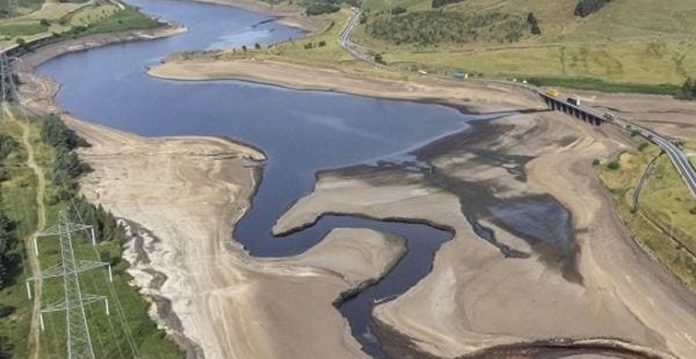The early onset of summer has led to a drop in the water level of the Gomti river to 1.4 feet below the normal 346.7 feet due to the extreme weather.
No winter rains and unusually high temperatures in February are being cited as reasons. According to officials, the normal level is the “intake point” below which the Jal Sansthan pumping station at Gaughat water works cannot draw water to supply it to many areas of the Old City.
Sources said that the situation may lead to a drinking water crisis in the state capital if the river is not provided fresh supply from the Sharda canal by the irrigation department in the next six days.
Also Read: KCR gives representation how to overcome water crisis in Telugu States
According to the Jalkal department, the water level has reached 345. 3 feet at Gaughat pumping station – the level the river reaches usually in May.
Due to a drop in water level, the Jalkal department had to cut the water supply for half an hour in the morning and evening in Aminabad, Aishbagh, Nakhas, Rakabganj, Naka, KKC, Lalbagh, Latouche Road last week.
Thereafter, some quantity of water was released from the canal by the irrigation department that is being used.
Prof Dhruvsen Singh, a geologist at Lucknow University who has done extensive work on the Gomti, said that there are three main reasons behind this.
“The first reason is no winter rains this year, the second is the extremely hot February and the third is the widespread withdrawal of groundwater,” he said.
“The river originates from Gomat Taala in Pilibhit and is a groundwater-fed river that is enriched with rainwater. Since, this year, all three factors were adversely affected, the water level went down,” he said.
He further stated, “We cannot control rain or weather conditions, so groundwater extraction should be controlled, and rainwater harvesting should be done in every household. If remedial steps are started today, it will take at least two years to restore normalcy.”
The temperature in February, this year, has remained 2 to 5 degrees Celsius higher than normal and there has been a 73 percent reduction in winter rainfall.
According to a senior official at the School of Earth Environmental Sciences (SEES), BBAU, global warming could be the reason behind meteorological anomalies.
“If we follow the meteorological department’s “100 Year Rainfall Series”, which was released a few years back, we will find that the rainfall in the upper basin of the Gomti has decreased for the last 20 years. As a result, the tributaries have dried up, but people kept extracting groundwater. All this is slowly drying up the river,” he said.
Ram Kailash Gupta, general manager, the Jalkal department, said, “We are in talks with the irrigation department to release 100 cusecs of water per day from Sharda to Gomti soon to meet the crisis.”
(This story has been sourced from a third-party syndicated feed, agencies. Raavi Media accepts no responsibility or liability for the dependability, trustworthiness, reliability, and data of the text. Raavi Media management/ythisnews.com reserves the sole right to alter, delete or remove (without notice) the content at its absolute discretion for any reason whatsoever.)







